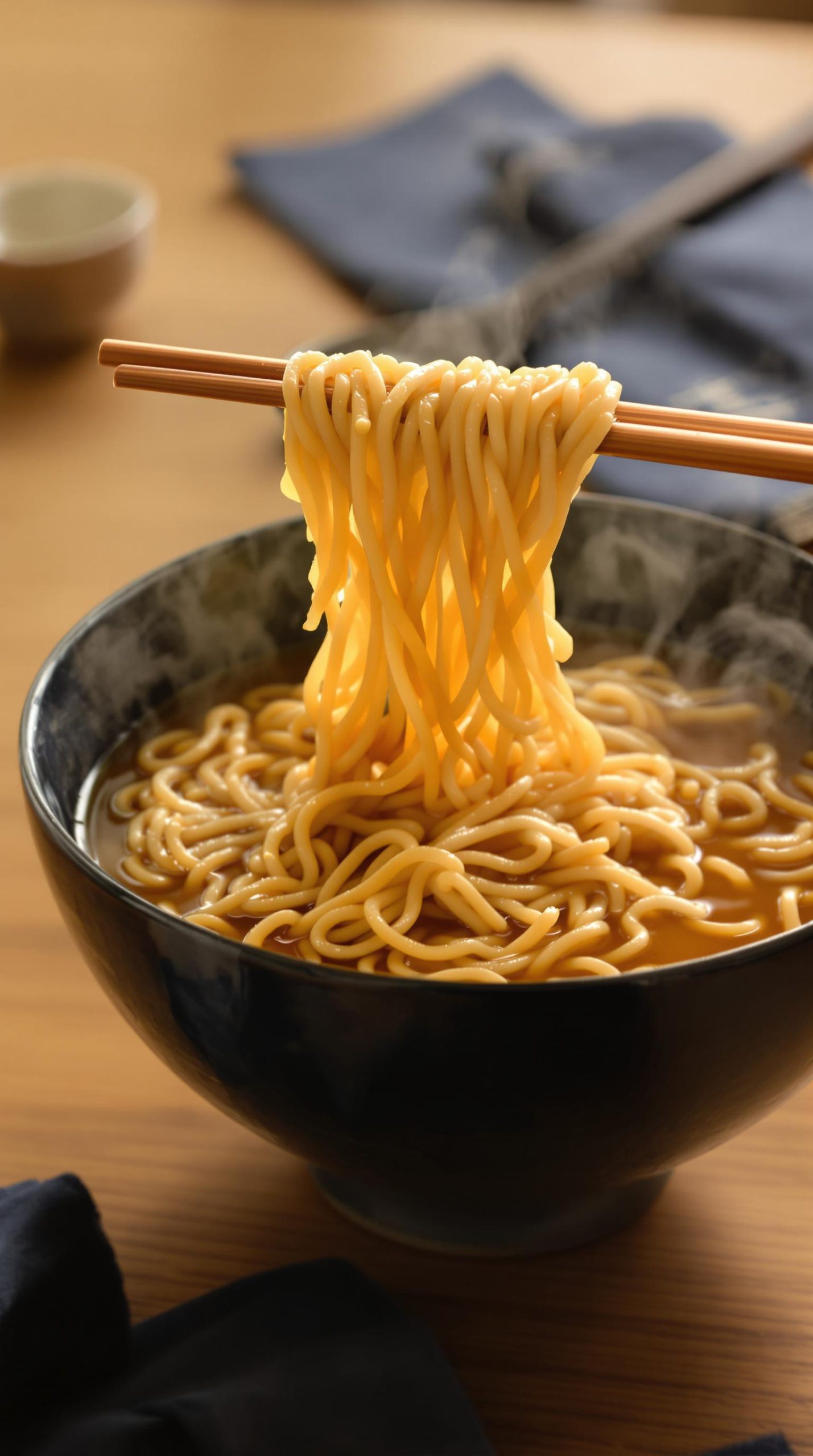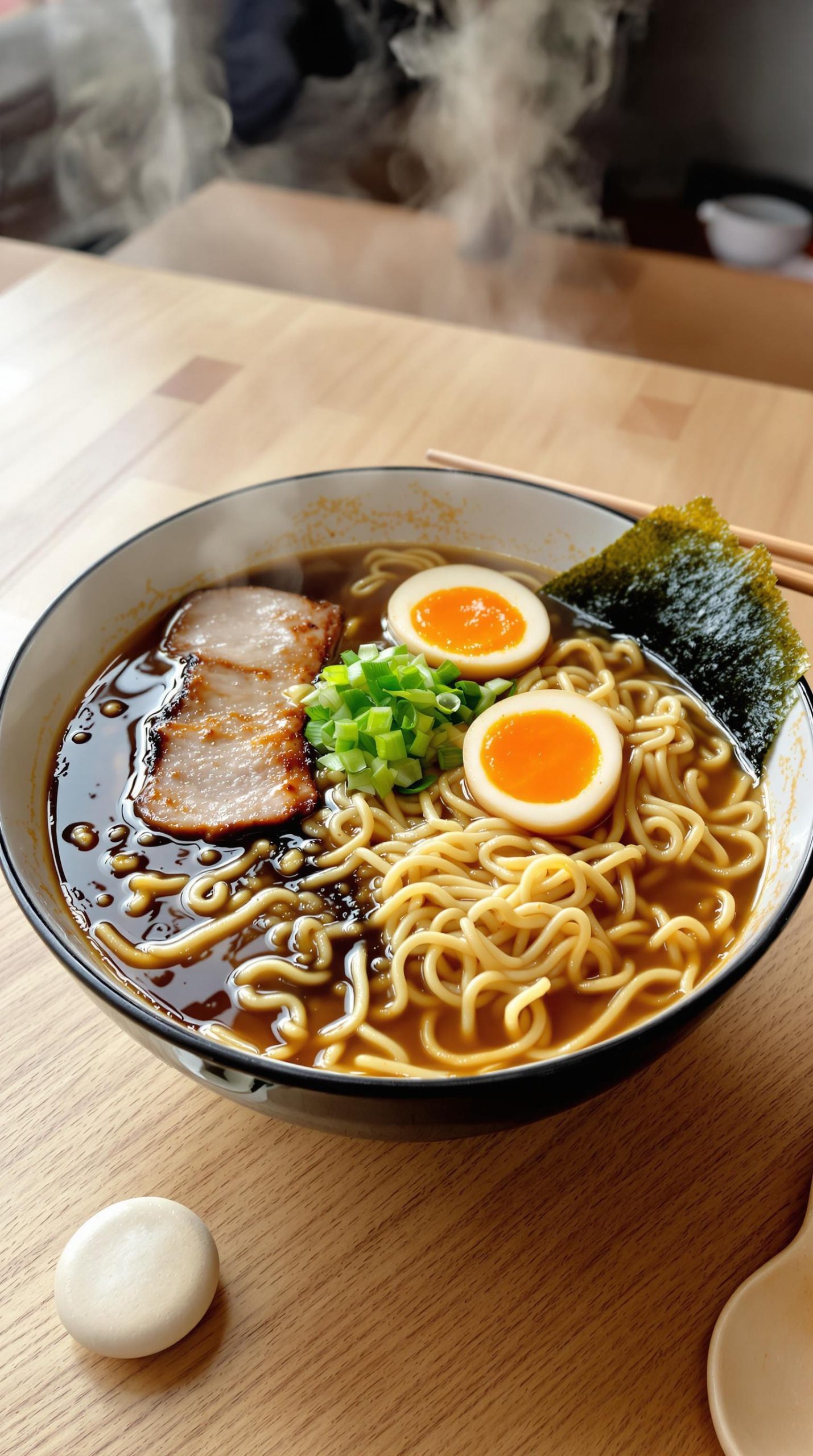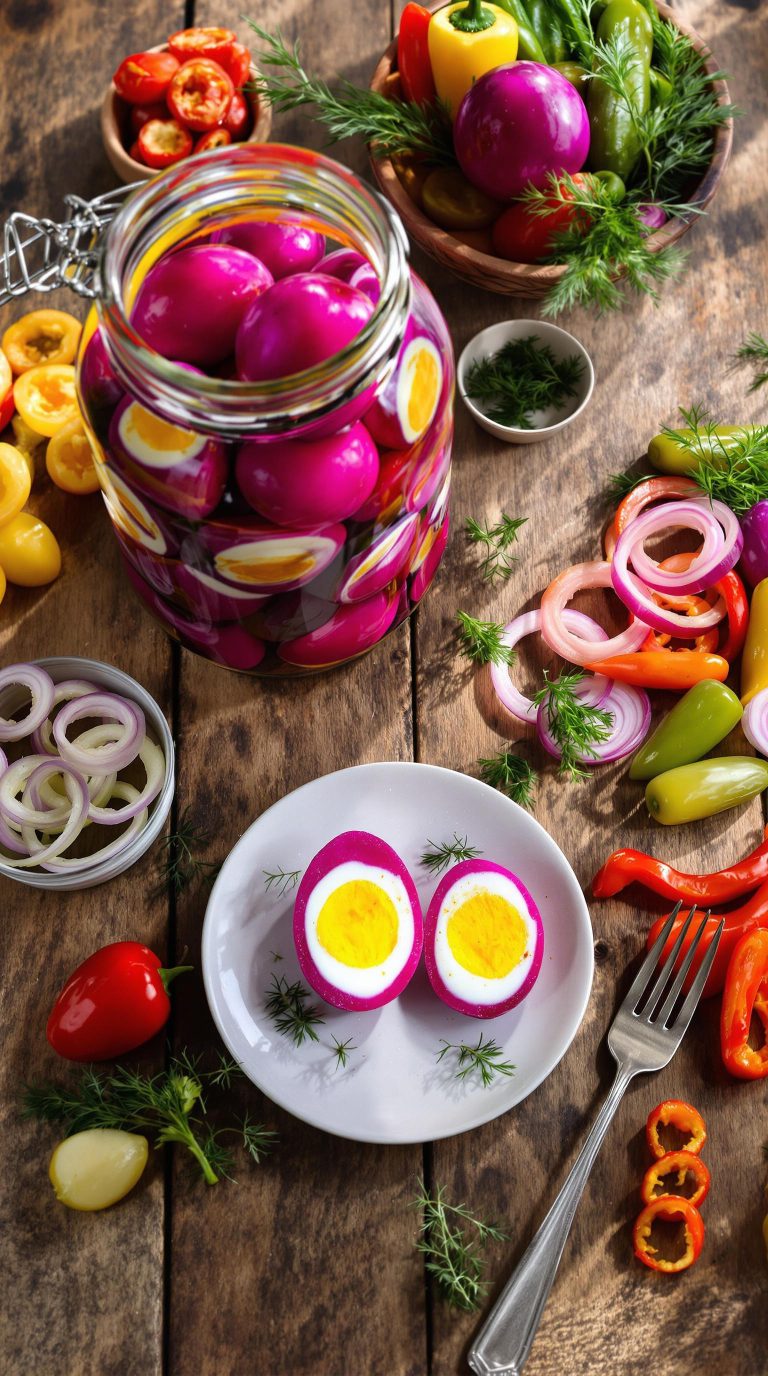Why You’ll Love these Homemade Japanese Ramen Noodles
If you’ve ever slurped a perfect bowl of ramen at your favorite Japanese restaurant, you’ve probably wondered if you could recreate that magic at home.
Well, I’m here to tell you that you absolutely can, and with just three simple ingredients: flour, water, and kansui.
What I love most about homemade ramen noodles is the incredible texture—chewy, bouncy, and nothing like those dried packets.
The process is surprisingly therapeutic, too. Once you’ve mastered the technique, you’ll never go back to store-bought.
Plus, imagine the look on your friends’ faces when you casually mention, “Oh, I made the noodles from scratch.”
What Ingredients are in Homemade Japanese Ramen Noodles?
The beauty of homemade ramen noodles lies in their simplicity. With just three basic ingredients, you can create those wonderfully chewy, bouncy noodles that form the foundation of a perfect ramen bowl.
And unlike many recipes that call for a long list of specialty items, authentic Japanese ramen noodles require very few components—though each plays a vital role in developing that distinctive texture and flavor that sets them apart from other noodle varieties.
Ready to discover the magic behind these incredible noodles?
- 2 cups flour
- 1/2 cup water
- 1 teaspoon lye water (kansui)
The most important ingredient on this list is kansui, also known as lye water, which gives ramen noodles their distinctive yellow color and springy texture.
This alkaline solution is what differentiates ramen from other wheat noodles like udon or soba. You can find kansui at Asian grocery stores or online specialty shops.
If you can’t locate it, some home cooks substitute a pinch of baking soda that’s been baked in the oven for about an hour to increase its alkalinity—though the results won’t be quite as authentic.
As for flour, medium-high protein flour works best, as it helps develop that chewy texture we all love in a good ramen noodle.
How to Make these Homemade Japanese Ramen Noodles

Making restaurant-quality ramen noodles at home is surprisingly straightforward, though it does require a bit of equipment. Start by combining 2 cups of flour with 1/2 cup of water and 1 teaspoon of lye water (kansui) in a large bowl. This is where the magic begins—that tiny teaspoon of kansui is what transforms ordinary wheat dough into authentic ramen noodles with their characteristic bounce and chew.
Mix everything together until it forms a rough ball, then get your hands in there and knead the dough thoroughly. You’ll notice it feels different from regular pasta dough, a bit more firm and less sticky, which is exactly what we want.
Once your dough has been kneaded into a smooth, cohesive ball, it’s time to shape those noodles. This is where a pasta machine becomes your best friend. While you could theoretically roll and cut these by hand (and power to you if that’s your thing), a pasta machine with a spaghetti attachment makes quick work of creating those perfectly uniform strands. Investing in a premium pasta maker will significantly elevate your noodle-making experience with consistent results every time.
Run the dough through the machine gradually, starting with the widest setting and working your way down to a medium thickness. Then, switch to the spaghetti attachment to cut the sheets into those classic ramen strands. Don’t they look professionally made? There’s something so satisfying about watching those noodles emerge from the cutter.
The final step is cooking these beautiful homemade noodles. Bring a large pot of salted water to a rolling boil—and I mean really rolling, not just a few bubbles. The art of homemade pasta extends to various cuisines, with ramen being one of the most rewarding to master.
Drop your fresh ramen noodles into the pot and cook for approximately 5 minutes. Remember that homemade noodles cook much faster than dried ones, so keep a close eye on them. The texture you’re aiming for is al dente with that signature springy chew.
Once cooked, drain them well and transfer immediately to your waiting bowl of hot broth. Aren’t homemade noodles worth every minute of effort? The texture and flavor simply can’t be matched by anything store-bought.
Homemade Japanese Ramen Noodles Substitutions and Variations
While authentic Japanese ramen noodles traditionally call for specific ingredients, several substitutions can make this recipe more accessible for home cooks without compromising too much on flavor and texture.
Can’t find lye water? I understand the struggle. You can substitute it with baking soda that’s been baked in the oven at 250°F for about an hour. This creates sodium carbonate, which mimics kansui’s alkaline properties.
For flour variations, try using bread flour for chewier noodles or a mix of all-purpose and cake flour for a more delicate texture.
Got a gluten sensitivity? Rice flour can work, though the texture differs greatly.
What to Serve with Homemade Japanese Ramen Noodles
Once your homemade ramen noodles are perfectly cooked and resting in their bath of broth, you’ll want to contemplate what accompaniments can transform this humble bowl into a complete meal.
I’m partial to soft-boiled eggs with that dreamy, jammy center, thinly sliced chashu pork, and a handful of fresh scallions.
Don’t forget nori seaweed, corn kernels, or bean sprouts for textural contrast. A drizzle of chili oil or a pat of butter—yes, butter—can add richness that’ll have you scraping the bottom of your bowl.
Bamboo shoots, mushrooms, or fish cake slices? All welcome additions to your personal ramen masterpiece.
Final Thoughts
The journey from flour to noodle marks one of the most satisfying culinary adventures I’ve ever recommended.
There’s something almost magical about transforming simple ingredients—just flour, water, and kansui—into strands of chewy, authentic ramen noodles.
While store-bought versions offer convenience, nothing compares to the texture and flavor of homemade. Can you imagine the looks on your guests’ faces when you casually mention you made everything from scratch?
Making your own ramen noodles puts you in control of your ingredients and connects you to centuries of Japanese culinary tradition. And unlike leftover rice techniques that transform yesterday’s meal, noodle-making is an art form that starts fresh each time.
Like creating the perfect layered lasagna, homemade noodles require attention to detail but result in a far superior dining experience than pre-packaged alternatives.
Worth every minute of effort, don’t you think?





